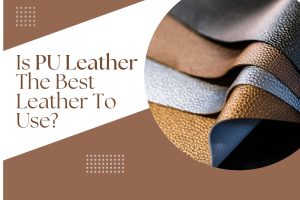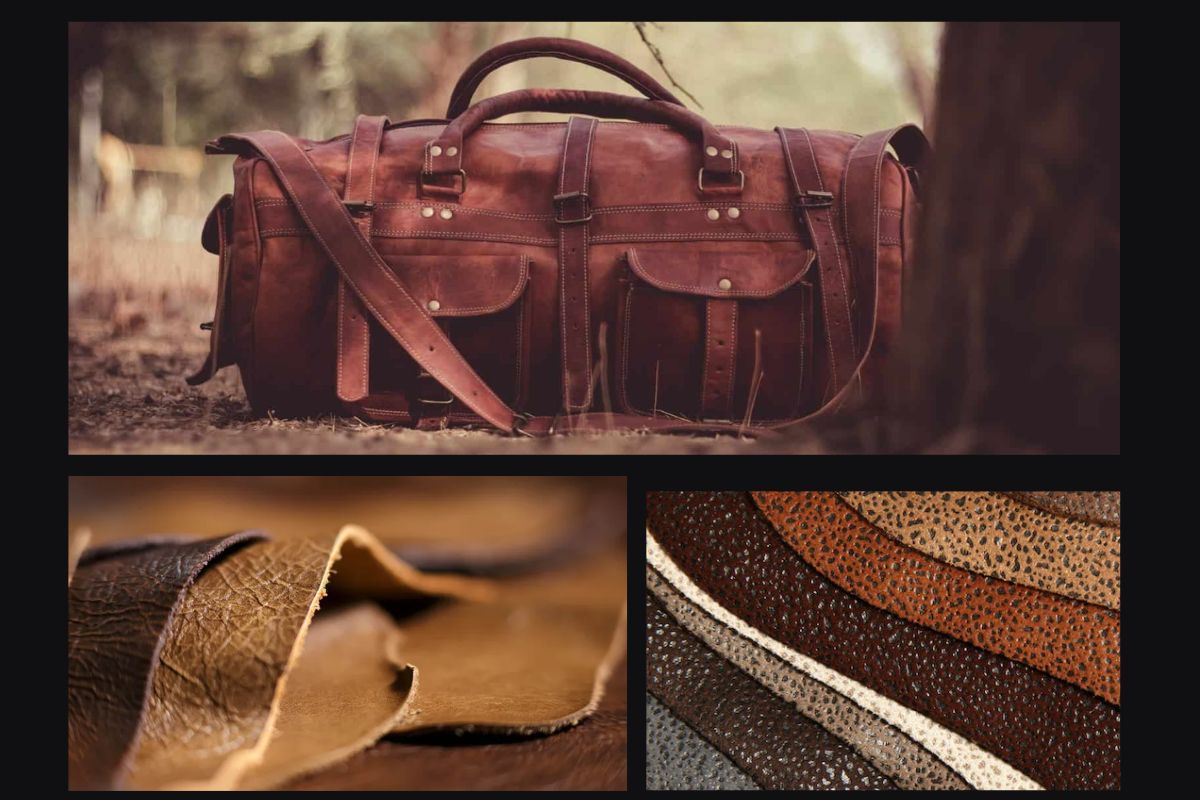

PU leather is an artificial leather typically used to create footwear, apparel, furniture, and other things. PU leather, also referred to as polyurethane leather, is formed of thermoplastic polymer and is entirely synthetic, making it vegan in contrast to its genuine cousin.
Double-cast leather can be made by combining PU leather with actual leather. Here, a divided base of actual leather is covered with a base of PU leather; however, because of this, the end product is no longer thought of as being made of vegan leather, and vegan buyers will be much less likely to buy things created from this leather.
Although it goes by many other names, including bi-cast leather, split leather, bonded leather, reconstituted leather, and rectified grain leather, PU leather is most frequently referred to as artificial leather. While some or all of these labels may be printed on merchandise sold in shops and apparel boutiques, they all effectively denote that the item is made of PU leather rather than genuine leather.
In essence, PU leather is a subpar substitute for real leather that consumers could opt to buy for a variety of factors, including price, convenience, or even the fact that it is vegan-friendly.
Table of Contents


PU leather has a lot of advantages and disadvantages, and every buyer will have a different personal choice. However, there are instances where it is obvious that real leather is a preferable option and instances where the advantages of PU leather may be recognized.
The inability of PU leather to absorb water is another advantage. Because of this, PU leather products are simpler to clean and, should they get wet, much simpler to dry.
The fact that PU leather may be produced in a multitude of colours and styles is another advantage. This could increase the appeal of PU leather products and increase the consumer appeal of some goods.
The lower cost of PU leather is one of its advantages. PU leather is marketed less than real leather since it is less expensive to produce. Customers who are willing to forego quality to save money will find this to be a significant inducement to purchase PU leather.
The fact that PU leather can occasionally appear false, synthetic, and even sticky is one of the most significant and obvious drawbacks of the material. The PU replacement is just not an option for clients who want to dress well and feel confident in a piece of genuine real leather.
The scent that PU leather emits is another significant drawback. A consumer will frequently discover that a product made of PU leather has a plastic- or chemical-like odour after acquiring it. In some situations, this odour might even become overbearing. The smell of a product manufactured from fresh, mild, and pleasant materials contrasts sharply with this.
The fact that PU leather is not breathable, in contrast to real leather, is another drawback of the material. A product manufactured of PU leather could feel rigid, stuffy, and confining in comparison to a genuine leather item, which will feel light and airy.
In addition, PU leather is known to deteriorate rather quickly with use. Although certain products might not dry out, PU leather can crack, making it look unsightly and turning off many customers from wearing it. This means that real leather will always outlast synthetic leather, so if you want a piece of leather that will stand the test of time, go for real, true leather.
PU leather goods are also not as environmentally friendly as they might seem. These goods may use fewer resources to make, but because they take far longer to degrade than genuine leather goods, they are worse for the environment.
The lack of patina development over time is another significant disadvantage of PU leather. The term “patina” describes the lovely worn appearance that develops as time passes on a piece of genuine leather. This is a key component of leather’s appeal and illustrates the effort and time it takes to create a gorgeous piece of genuine leather. It is quite challenging for any piece of PU leather to equal the beauty and visual appeal of a high-quality piece of real leather since PU leather does not evolve in the same way that real leather does.
Let’s explore PU leather durability in more detail. Real leather is thought to last longer than faux leather substitutes, as was already established.
Due to repeated usage and exposure to the environment, PU leather inevitably degrades. This shows itself in a variety of forms, including peels, cracks, discolouration, and rips. Consider a faux-leather jacket or a car seat that ages unevenly and tears.
However, it’s crucial to approach this matter from a nuanced angle. Naturally, PU leather created from premium resin and fabric backing will outperform equivalents made from inferior raw materials.
PU leather is only one of the many synthetic or natural materials on the market that are intended to mimic the appearance and characteristics of genuine leather.
Whether it’s a viable option for you relies on a variety of elements, including your views on plastic usage and the price range for a given piece of furniture or apparel. You can use the information in this article to help you make an informed choice.
Named for football sensation Alejandro Garnacho, the garnacho haircut has become rather popular worldwide. Apart…
When searching for a trustworthy pest control business, reading reviews is usually the way to…
Lip flip, a cosmetic procedure to give your upper lip a fuller look. In contrast to…
Some fashions are always changing, allowing people to express themselves and their imaginations through clothing.…
A devastating 7.7 magnitude earthquake struck Myanmar and Thailand on Friday, leveling buildings and causing…
Danny Kilcannon VarsityGaming, celebrated educator, influencer, and professional gamer Danny Kilcannon is best known by…